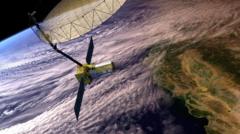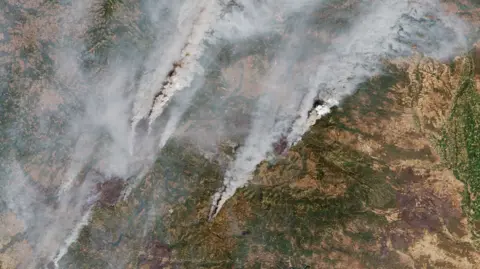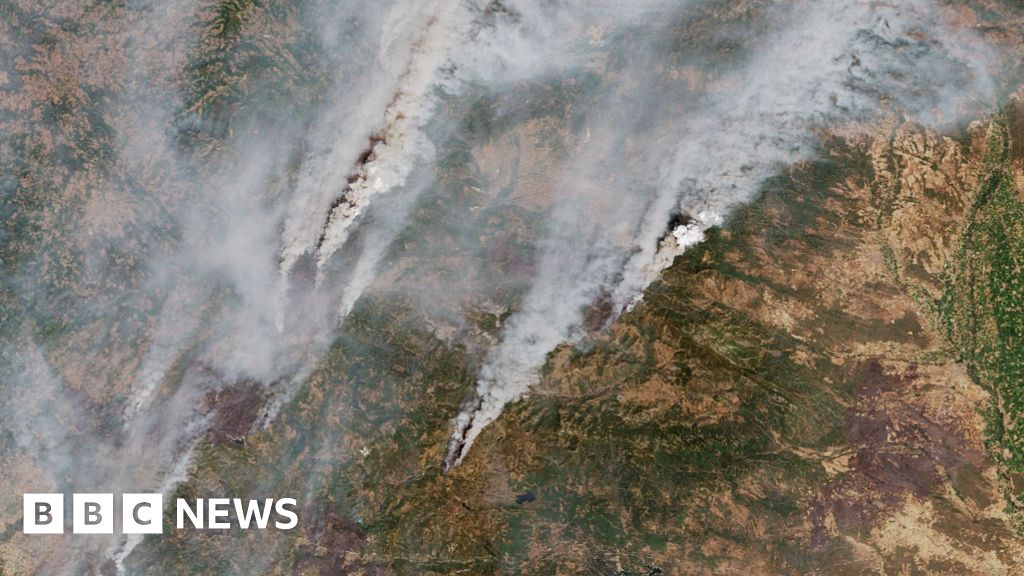The long-awaited launch of the Nasa-Isro Synthetic Aperture Radar (Nisar) satellite is upon us, with the mission promising unprecedented satellite-based observation capabilities. The 2,392 kg satellite is scheduled to take off from the Satish Dhawan Space Centre in India at 17:40 local time (12:10 GMT) on Wednesday, marking a significant collaborative effort between NASA and the Indian Space Research Organisation (ISRO).
Nisar, dubbed the "most sophisticated radar we've ever built," will provide critical data that professors and researchers believe will enhance global disaster preparedness and response. It will be particularly adept at detecting even minute changes in the Earth’s land, sea, and ice sheets, and will play a fundamental role in climate change monitoring and disaster management.
Notably, Nisar will utilize a unique combination of two radar frequencies: NASA's L-band and ISRO's S-band, making it the first of its kind in space to implement this dual-frequency technology. The satellite will be placed in a "sun-synchronous polar orbit," allowing it to revisit the same locations on Earth every 12 days, collecting data with precision and consistency.
As former NASA scientist Mila Mitra explained, this recurring observational capability allows scientists to track phenomena such as land subsidence, ice melting in polar regions, and even human-induced environmental changes stemming from urban development. Mitra's insights reiterate the importance of monitoring subtle shifts in the Earth's surface, given their potential ramifications on natural disasters and climate patterns.
NASA's director of Earth Sciences, Karen St Germain, emphasized the far-reaching impact of this mission during a pre-launch conference in India, noting Nisar's potential to foresee environmental hazards, thereby supporting proactive measures in disaster prevention.
This extraordinary satellite was conceived and constructed during the challenging times of the COVID-19 pandemic, showcasing the capability of scientists working together from opposite ends of the globe. The $1.5 billion mission has been over a decade in the making, highlighting the collaborative spirit of science transcending borders.
ISRO chairman V Narayanan deemed Nisar a “life-saving satellite” and a testament to India’s growing influence in the space domain. Indian Science Minister Jitendra Singh heralded the launch as a defining moment for India-US space cooperation. He stated that Nisar not only stands as a technological achievement but also as a symbol of India's commitment to global scientific engagement.
This upcoming launch follows significant milestones for India in space exploration, including the historic landing on the Moon's south pole region and achievements in solar observation missions. Furthermore, ISRO has ambitious ambitions for the future, planning to launch its first human spaceflight, Gaganyaan, in 2027, with aims to establish a space station by 2035 and send astronauts to the Moon by 2040.
Stay tuned as Nisar embarks on its journey to enhance our understanding of Earth and its changing environments.
Nisar, dubbed the "most sophisticated radar we've ever built," will provide critical data that professors and researchers believe will enhance global disaster preparedness and response. It will be particularly adept at detecting even minute changes in the Earth’s land, sea, and ice sheets, and will play a fundamental role in climate change monitoring and disaster management.
Notably, Nisar will utilize a unique combination of two radar frequencies: NASA's L-band and ISRO's S-band, making it the first of its kind in space to implement this dual-frequency technology. The satellite will be placed in a "sun-synchronous polar orbit," allowing it to revisit the same locations on Earth every 12 days, collecting data with precision and consistency.
As former NASA scientist Mila Mitra explained, this recurring observational capability allows scientists to track phenomena such as land subsidence, ice melting in polar regions, and even human-induced environmental changes stemming from urban development. Mitra's insights reiterate the importance of monitoring subtle shifts in the Earth's surface, given their potential ramifications on natural disasters and climate patterns.
NASA's director of Earth Sciences, Karen St Germain, emphasized the far-reaching impact of this mission during a pre-launch conference in India, noting Nisar's potential to foresee environmental hazards, thereby supporting proactive measures in disaster prevention.
This extraordinary satellite was conceived and constructed during the challenging times of the COVID-19 pandemic, showcasing the capability of scientists working together from opposite ends of the globe. The $1.5 billion mission has been over a decade in the making, highlighting the collaborative spirit of science transcending borders.
ISRO chairman V Narayanan deemed Nisar a “life-saving satellite” and a testament to India’s growing influence in the space domain. Indian Science Minister Jitendra Singh heralded the launch as a defining moment for India-US space cooperation. He stated that Nisar not only stands as a technological achievement but also as a symbol of India's commitment to global scientific engagement.
This upcoming launch follows significant milestones for India in space exploration, including the historic landing on the Moon's south pole region and achievements in solar observation missions. Furthermore, ISRO has ambitious ambitions for the future, planning to launch its first human spaceflight, Gaganyaan, in 2027, with aims to establish a space station by 2035 and send astronauts to the Moon by 2040.
Stay tuned as Nisar embarks on its journey to enhance our understanding of Earth and its changing environments.

















